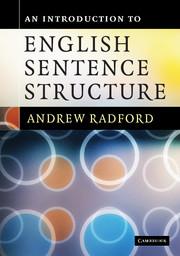8 - Split projections
Summary
Overview
Hitherto, we have assumed a simple model of clause structure in which complete clauses are CP+TP+VP structures. However, in this chapter, we review work suggesting that CP, TP and VP should be split into more than one type of projection – hence the title of this chapter. We begin by looking at arguments that the CP layer of clause structure should be split into a number of separate (Force Phrase, Topic Phrase and Focus Phrase) projections. We then go on to explore the possibility of splitting TP into separate Tense Phrase, Aspect Phrase and Mood Phrase projections. In the remainder of the chapter, we look at evidence that verb phrases should be split into two separate projections – one headed by a lexical verb and the other by an abstract light verb.
Split CP: Force, Topic and Focus projections
Our discussion of wh-movement in chapter 5 was concerned with movement of wh-expressions to the periphery of clauses (i.e. to a position above TP). However, as examples like (1) below illustrate, it is not simply wh-constituents which undergo movement to the clause periphery:
(1) No other colleague would he turn to
In (1), no other colleague (which is the complement of the preposition to) has been focused/focalised – i.e. moved to the front of the sentence in order to focus it (and thereby give it special emphasis).
- Type
- Chapter
- Information
- An Introduction to English Sentence Structure , pp. 279 - 322Publisher: Cambridge University PressPrint publication year: 2009



